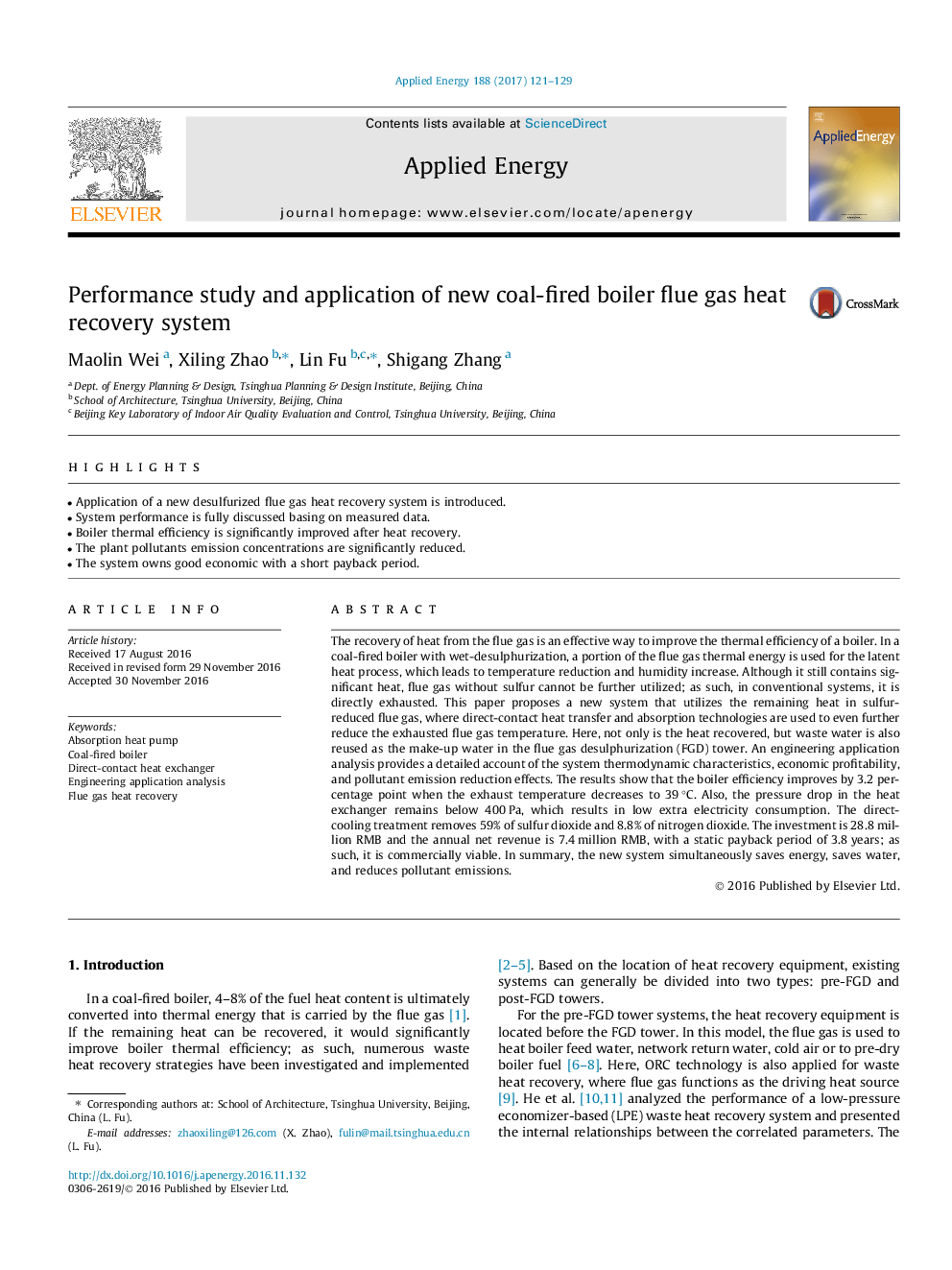| Article ID | Journal | Published Year | Pages | File Type |
|---|---|---|---|---|
| 4911121 | Applied Energy | 2017 | 9 Pages |
Abstract
The recovery of heat from the flue gas is an effective way to improve the thermal efficiency of a boiler. In a coal-fired boiler with wet-desulphurization, a portion of the flue gas thermal energy is used for the latent heat process, which leads to temperature reduction and humidity increase. Although it still contains significant heat, flue gas without sulfur cannot be further utilized; as such, in conventional systems, it is directly exhausted. This paper proposes a new system that utilizes the remaining heat in sulfur-reduced flue gas, where direct-contact heat transfer and absorption technologies are used to even further reduce the exhausted flue gas temperature. Here, not only is the heat recovered, but waste water is also reused as the make-up water in the flue gas desulphurization (FGD) tower. An engineering application analysis provides a detailed account of the system thermodynamic characteristics, economic profitability, and pollutant emission reduction effects. The results show that the boiler efficiency improves by 3.2 percentage point when the exhaust temperature decreases to 39 °C. Also, the pressure drop in the heat exchanger remains below 400 Pa, which results in low extra electricity consumption. The direct-cooling treatment removes 59% of sulfur dioxide and 8.8% of nitrogen dioxide. The investment is 28.8 million RMB and the annual net revenue is 7.4 million RMB, with a static payback period of 3.8 years; as such, it is commercially viable. In summary, the new system simultaneously saves energy, saves water, and reduces pollutant emissions.
Related Topics
Physical Sciences and Engineering
Energy
Energy Engineering and Power Technology
Authors
Maolin Wei, Xiling Zhao, Lin Fu, Shigang Zhang,
